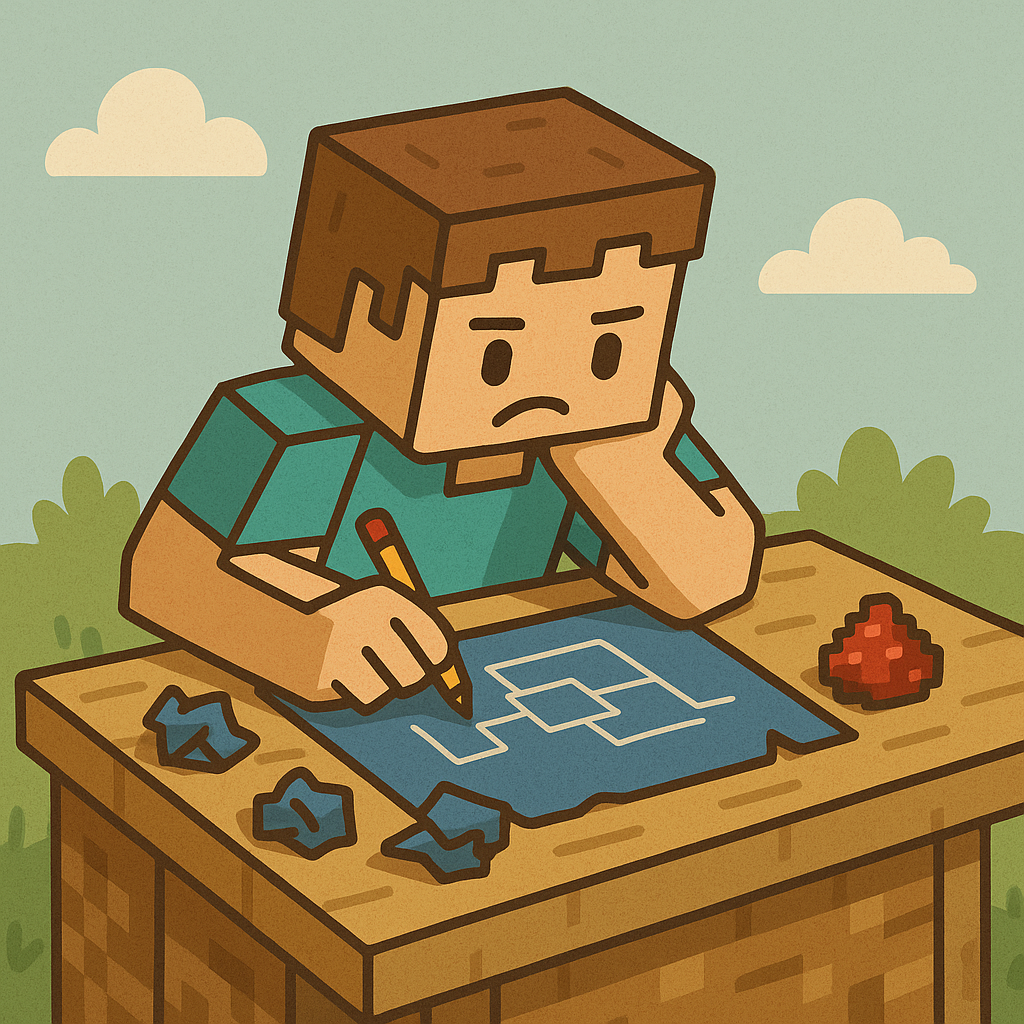Ever built a redstone contraption that worked… eventually? Or spent three hours perfecting a farm around a mob spawner, only to realize your control station was too far away, so nothing spawned? Congratulations: you’ve been engineering.
Minecraft doesn’t hand you a syllabus, but it does hand you a world and the freedom to solve problems in it however you like. And that freedom, as it turns out, is the perfect sandbox for thinking like an engineer.
Engineering Without the Jargon
Ask most people what an engineer does, and you’ll probably get answers like designing bridges, robots, or spaceships. But at its core, engineering is simply solving problems with creativity, logic, and constraints. And that’s exactly what Minecraft players do every day.
When a player designs a base with limited resources, automates a sugarcane farm, or routes a minecart system around existing buildings, they’re engaging with fundamental engineering principles: design, test, iterate, and improve. They might not call it a “design loop,” but they’re absolutely living it.
Engineering Examples, Pixel by Pixel
Let’s look at just a few in-game mechanics that mirror real-world engineering:
Redstone Logic
This is quintessential Minecraft engineering and what most people think of first. Whether it’s a hidden piston door or an elaborate trap, redstone systems introduce players to wiring, logic gates, and signal flow.
Mob Farms
At their heart, all mob farms are really just designing around constraints. The game has a mechanic that you can’t change. Players capitalize on that mechanic to make a farm. They have to consider resource flow, timing, and efficiency. Sound familiar? That’s systems engineering in a blocky disguise.
Build Planning
From early dirt huts to elaborate mega bases, players make design decisions based on resource availability, functional architecture (creeper-proofing, anyone?), and aesthetics.
Team Projects
In multiplayer, engineering expands to include collaboration and division of labor. Who is planning the city layout? Who’s designing the storage system? Who’s running the rails?
If you’ve ever yelled at a friend because they put the comparator in backwards… first of all, chill out. Second, congratulations, you’ve experienced debugging.
Real-World Parallels
These problem-solving moments aren’t just “game stuff.” They echo what real engineers do every day:
- Think in systems and see how parts connect
- Prototype a new design to test and revise it
- Automate mundane and repetitive tasks
- Establish design requirements and carry out the construction
- Breaking down big problems into smaller steps
Many engineers grow up tinkering with Legos, building go-karts, or breaking apart radios to see what’s inside. Minecraft offers the same spark, just without the screwdrivers.
Why It Matters
For parents and educators, this is more than trivia. It’s a reminder that play and learning aren’t opposites. When kids (or adults) immerse themselves in Minecraft builds, they really are developing valuable mental models.
They’re learning how to handle failure and adapt. They’re asking “what if?” and then they’re following through with action.
These skills are worth nurturing. They might not lead directly to a job in engineering, but they absolutely build confidence in STEM thinking.
Keep Building, Keep Learning
So the next time someone shrugs off Minecraft as “just a game,” feel free to correct them. It’s a playground for engineers in training.
And it’s a game!
So, the next time you find your kid knee-deep in pistons and rails, don’t just ask what they’re doing… ask how it works. Ask why they chose to do it the way they did. That’s where the real magic begins.

